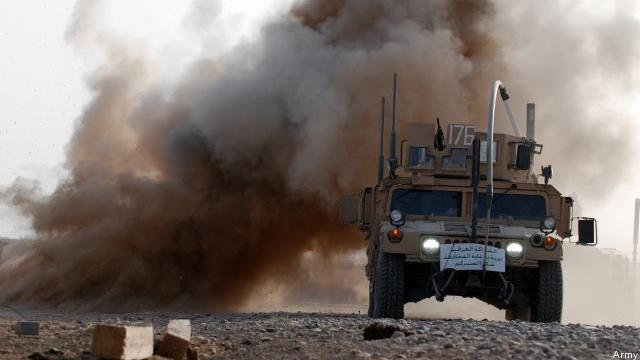 WASHINGTON: Lighter, faster and more lethal.
WASHINGTON: Lighter, faster and more lethal.
That’s where he U.S. military is headed as a result of looming budget cuts slated to begin in fiscal 2013. And that’s where the Army wants to take their fleet of light combat vehicles, to help ease that budget blow. But to get there, service leaders plan to radically change the way the Army deploys its fighting vehicles.
The Army’s Training and Doctrine Command is looking at ways to draw down the light combat fleet while still keeping it viable. One way is to change how the Army assigns its tactical vehicles to individual units. TRADOC is looking at abandoning certain vehicle assignments to specific brigade combat teams and moving to a pool system, service spokesman Maj. Christopher Kasker said. The idea is part of an ongoing review of the Army’s light tactical fleet that began late last year.
So instead of each BCT having its own organic fleet of combat vehicles when it deploys, it will have to share a pool of vehicles with other Army units. These vehicle pools will be limited to “common use and general purpose task trucks,” Kasker said. Assignments of up-armored Humvees, Mine Resistant Ambush Protected Vehicles or the Joint Light Tactical Vehicles to Army BCTs will likely not be affected. “This strategy will account for the possible requirement to realign some number of [tactical wheeled vehicles] currently in [the] Brigade Combat Teams to echelons above brigade,” he explained in an e-mail to Breaking Defense. The current TRADOC effort is focused at the BCT level, but will be pushed across the all the “multi-functional and functional” support brigades, Kasker added.
The Army could stand to save millions through this plan, since it will not have to equip each BCT with its a full compliment of vehicles. It will also be able to cut critical personnel costs since BCTs won’t have as many vehicles to maintain. But it’s also a bold break from the Army’s long-standing practice of having combat units deploy with everything they may need. Army units in Afghanistan have pooled weapons and vehicles before, but in much smaller quantities compared to what TRADOC is proposing. The vehicle and weapon pools in Afghanistan were designed to allow mission flexibility, not cost savings, for Army troops.
But moving the light vehicle fleet to a pool system is just one instance of the Army trying better manage its increasingly dwindling resources. “Pooling is based on the fact that the Army does not use 100 percent of its trucks all the time,” Kasker said. “Pooling will provide an alternative to [Army Forces Generation] equipping, yet still support [service] readiness objectives.” In the case where an Army unit could be left shorthanded vehicle-wise, service leaders plan will use private contractors to close that gap.
‘AI-BOM’ bombs: Army backs off, will demand less detailed data from AI vendors
Instead of demanding an exhaustive “AI Bill of Materials.” the Army will only ask contractors for a “baseball card” of key stats on their AI — while building up its in-house capacity to check for bad code or “poisoned” data.


























